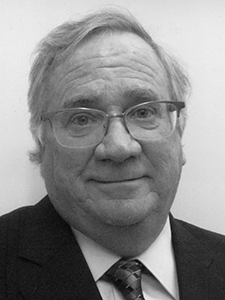Biography: M. Allen Northrup
Real-world events sometimes catalyze research activity in the blink of an eye.
 In 1996, biomedical engineer M. Allen Northrup partnered with Thomas L. Gutshall and Kurt Petersen to found Cepheid, a company they hoped would become the reference standard for DNA analysis. Northrup soon became chief technology officer and vice-president of research, and the company’s first product was released in 2000: the SmartCycler, a device that improved upon existing fast-cycling techniques for preparing DNA samples. Despite such innovation, though, the company’s focus on life sciences research did not attract much attention … particularly of a financial nature.
In 1996, biomedical engineer M. Allen Northrup partnered with Thomas L. Gutshall and Kurt Petersen to found Cepheid, a company they hoped would become the reference standard for DNA analysis. Northrup soon became chief technology officer and vice-president of research, and the company’s first product was released in 2000: the SmartCycler, a device that improved upon existing fast-cycling techniques for preparing DNA samples. Despite such innovation, though, the company’s focus on life sciences research did not attract much attention … particularly of a financial nature.
Then terrorists struck on 9/11, and suddenly everything changed.
One week later, as letters laced with anthrax spores were mailed to media outlets and two U.S. senators, the related threat of bioterrorism abruptly loomed large. Cepheid, one of very few companies able to produce accurate biodetection units, was asked by federal agencies and the U.S. Army to develop a way to test for plague, botulism and anthrax. In December 2002, Cepheid became part of a consortium tasked to develop and install biodetection threat systems at U.S. Postal Service mail-sorting facilities. Within three years, 700 mail-cancellation machines had been equipped with this technology, which sampled the air for anthrax spores and provided results every one to two hours.
As it happens, Northrup had left Cepheid in June 2001, in order to launch and become CEO of his own biotech start-up: MicroFluidic Systems, which debuted in November, mere months after the 9/11 attacks. Already looking beyond terrorism applications, Northrup’s new company quickly became known for the development of microfluidic systems for the automated preparation of biological assays: identification and monitoring technology for both biological pathogen and forensic DNA applications.
It was quite a career validation for Northrup, who had come far since obtaining his undergraduate degree in zoology in 1976, from the University of Vermont. After a decade in industry, he returned to academia in 1986, when he joined the UC Davis College of Engineering to work toward his doctorate in biomedical engineering. His research work was conducted at the Lawrence Livermore National Laboratory, where he developed fiber-optic biosensors and micro-fluorescence imaging systems, among other analytical instruments. Northrup earned his PhD in 1990 and then spent the next seven years at the Lawrence Lab: first as a post-doctoral fellow, then as a research scientist and principal engineer. He also was a visiting scholar at UC Berkeley, from 1991 to ’96; and an adjunct assistant professor in the Department of Radiology at the UC San Francisco Medical Center, from 1996 to ’99. During this time, he became the first scientist to demonstrate the PCR (polymerase chain reaction) process in a micro-machined silicon chip.
As the new century dawned, Northrup and MicroFluidic Systems significantly increased their national profile. Aside from making bioterror detection units used by the Department of Homeland Security, MicroFluidic also secured contracts with the FBI, the Department of Defense and the Office of Health Affairs. Northrup’s company became valued for its automated equipment, which was capable of detecting specific air-borne or lab-based biological samples: pathogens, viruses, bacteria and even specific human diseases such as H1N1 and other forms of the influenza virus. For the FBI, MicroFluidic developed a PCR-based system for the automated processing of rape swabs.
As the first decade of the 21st century concluded, MicroFluidic’s bio-defense applications moved away from the self-contained “lab on a chip” format to what Northrup called mesofluidic systems. His company also developed the world’s first miniaturized, portable, battery-operated, real-time PCR-based detection system, and hoped to establish this device — dubbed the “Dragonfly” — in global clinical markets for better hospital infection control and rapid disease detection in doctors’ offices. MicroFluidic’s other key product was the M-BAND (Microfluidics-based Bioagent Autonomous Networked Detector), a highly sensitive bio-aerosol monitor that continuously analyzes air samples and sends its readings via a secure wireless network in real time.
In May 2011, Northrup sold MicroFluidic Systems to PositiveID Corp for up to $8.2 million (based on revenue and earnings targets through 2014). At the time of sale, MicroFluidic had been granted 12 U.S. patents, with another 17 pending, and also had patents pending in Canada, Japan and Europe. Northrup remained on board until the end of that year, but his attention already was focused on a new project: the Northrup Consulting Group, which he founded in November 2011 as a vehicle to help large and small businesses grow in the biological detection field. He also has become the science adviser to three start-up companies in the United States and Europe, including Inspirotec and Fluigent.
Northrup has 50 U.S. and foreign patents to his name, along with 40 peer-reviewed publications and several engineering and entrepreneurial business awards. Cepheid’s next-gen bio-analytical detection system, GenXpert — which Northrup co-invented — recently was approved by the World Health Organization for its tuberculosis test. In 2013 Northrup was elected to the National Academy of Engineering.
During his down time, Northrup closely studies comedians and comic timing, with the goal — one day — of honing his own stand-up act.




